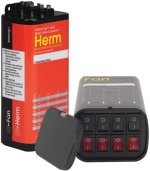DingusMcGee
10 kW
Gman,
We are in this endeavor together. I can accept your rationale for using a lower voltage with the controller. But that does not mean I think your rationale is a good argument for the rest of us doing such as you do as if were the gospel. Nor necessarily is your rationale a good argument for how the components will actually perform.
And what do you think I hear from you? If mine[arguments] are so "lame" they should be easy to deconstruct? I sometimes challenge thread posters on the level of actual information they offer to support their point of view. Hence, measure the cap voltage at the leads.
Pick a fight? I take this as a euphemism for saying he brutally destroyed my lame argument and I am a poor looser.
As for Lantice13 poo pooing gear clamps, I am still using the same gear clamps configuration show in the photo[pg 7 of this thread] on this bike without the washer stack. I do ride it on difficult trail & hill. That workout and duration of clamp use likely substantiates that gear clamps in the right places alone are adequate.
I am betting that the caps can take 5% overload if they even see 80v. No need to know what is at the leads. I do have a spare controller and you?
SCOTUS has declared some words are fighting words. Have I used any of these with you?
If you meant what you said in the above verbiage, why the grandiose effort to tell me so much of what you think of my ideas? I believe you said,
' whatever" .
We are in this endeavor together. I can accept your rationale for using a lower voltage with the controller. But that does not mean I think your rationale is a good argument for the rest of us doing such as you do as if were the gospel. Nor necessarily is your rationale a good argument for how the components will actually perform.
I always hear the same lame arguments from you;
And what do you think I hear from you? If mine[arguments] are so "lame" they should be easy to deconstruct? I sometimes challenge thread posters on the level of actual information they offer to support their point of view. Hence, measure the cap voltage at the leads.
you're just looking to pick up a fight, like you did with Lantice13 at the beginning of this thread...[see page 7] and then others; but like they say, ignorance is bliss... so, why don't you just solder the leads and find out, huh?
Pick a fight? I take this as a euphemism for saying he brutally destroyed my lame argument and I am a poor looser.
As for Lantice13 poo pooing gear clamps, I am still using the same gear clamps configuration show in the photo[pg 7 of this thread] on this bike without the washer stack. I do ride it on difficult trail & hill. That workout and duration of clamp use likely substantiates that gear clamps in the right places alone are adequate.
why don't you just solder the leads and find out, huh?
I am betting that the caps can take 5% overload if they even see 80v. No need to know what is at the leads. I do have a spare controller and you?
SCOTUS has declared some words are fighting words. Have I used any of these with you?
Again, you guys can do whatever you want with your money, its yours to spend.
If you meant what you said in the above verbiage, why the grandiose effort to tell me so much of what you think of my ideas? I believe you said,
' whatever" .





